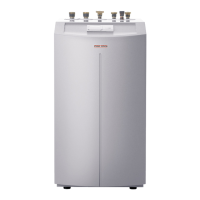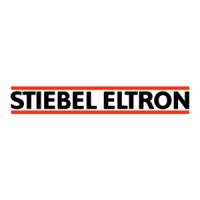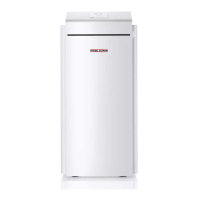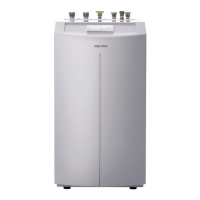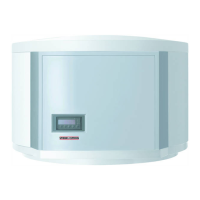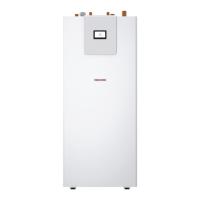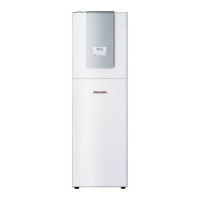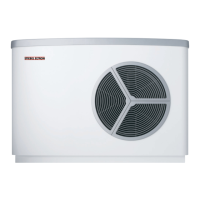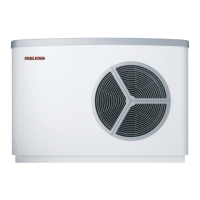WWW.STIEBEL-ELTRON.COM WPF 20/27/40/52/66 | 11
10.4.1 Oxygen diffusion
!
Risk of damage
In underfloor heating systems. avoid open heating
systems or the installation of steel pipes in conjunction
with plastic pipes that are permeable to oxygen.
Steel components. such as radiators and pipes. can corrode if
plastic underfloor heating system pipes. which are permeable to
oxygen. are used.
The products of corrosion. e.g. rusty sludge. can settle inside the
heat pump condenser and result in a lower output by reducing
the cross-section. or in a shutdown being activated by the high
pressure limiter.
10.4.2 Filling the heating system
Water quality
A fill water analysis must be available prior to charging the system.
This may, for example, be requested from the relevant water
supply utility.
!
Material losses
To avoid damage as a result of scaling, it may be necessary
to soften or desalinate the fill water. The fill water limits
specified in chapter "Specification / Data table" must
always be observed.
f Recheck these limits 8-12 weeks after
commissioning and as part of annual system
maintenance.
Note
With conductivity of >1000μS/cm, desalination treatment
is recommended in order to avoid corrosion.
Note
Suitable appliances for water softening and desalinating,
as well as for charging and flushing heating systems, can
be obtained via trade suppliers.
Note
If you treat the fill water with inhibitors or additives, the
same limits as for desalination apply.
10.4.3 Buffer cylinder
A buffer cylinder is recommended to ensure a trouble-free heat
pump operation. The buffer cylinder provides hydraulic separation
of the volume flow in the heat pump circuit and the heating circuit.
The flow rate in the heat pump remains constant if. for example.
the flow rate in the heating circuit is reduced by thermostatic
valves.
10.4.4 Circulation pump (cylinder primary pump)
When using a buffer cylinder. observe the pressure drop of the
evaporator. of the connecting lines. bends. valves etc. in sizing the
circulation pump to be installed.
10.4.5 Circulation pump (heating circuit pump)
Where no buffer cylinder is used. size the circulation pump
on the heating side taking the condenser pressure drop into
consideration. The flow rate at DT = 10 K (see "Specification") of
the heat pump must be assured under all operating conditions of
the heating system through the installation of an overflow valve.
10.4.6 Second external heat source
For dual-mode heating systems. always connect the heat pump
into the return of the second heat source (e.g. oil fired boiler).
High heating water temperature: In dual-mode heating systems.
the return water from the second heat source can flow through
the heat pump. immediately after it has been switched off. with
a max. temperature of 60 °C. The temperature may be 70 °C no
earlier than ten minutes after the heat pump has been shut down.
10.4.7 Heat meter
Observe the additional pressure drop when installing heat meters
on the heating side. The sieves inside the heat meters are easily
blocked by dirt particles in the heating circuit. further increasing
the pressure drop.
INSTALLATION
INSTALLATION
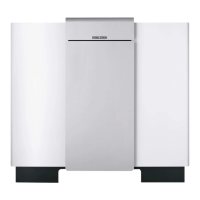
